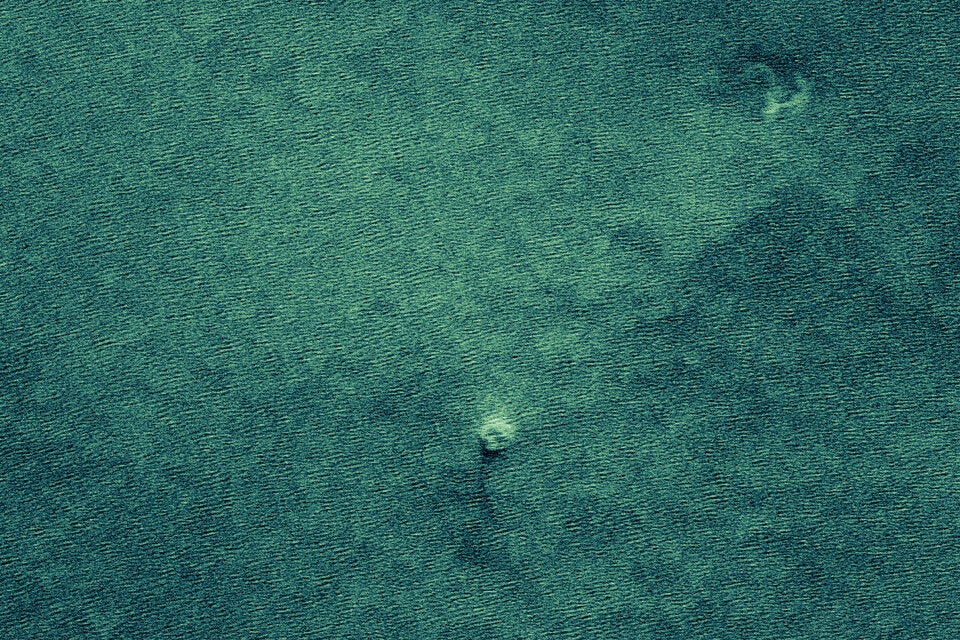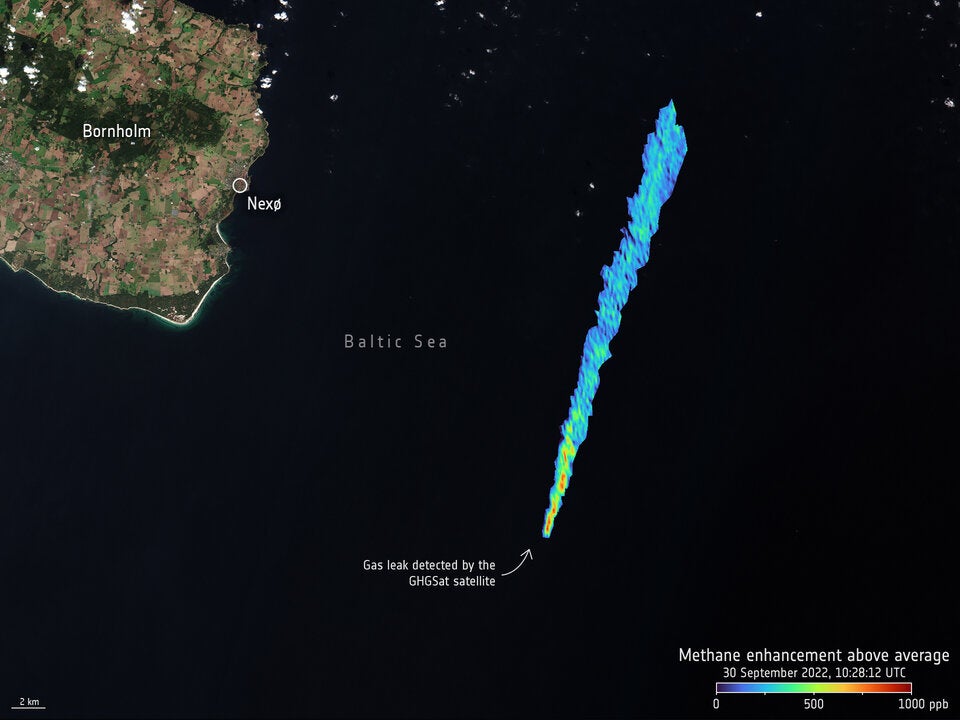Extent of Nord Stream leak pictured from space
Russia was accused of attacking the Nord Stream undersea gas pipelines
Your support helps us to tell the story
From reproductive rights to climate change to Big Tech, The Independent is on the ground when the story is developing. Whether it's investigating the financials of Elon Musk's pro-Trump PAC or producing our latest documentary, 'The A Word', which shines a light on the American women fighting for reproductive rights, we know how important it is to parse out the facts from the messaging.
At such a critical moment in US history, we need reporters on the ground. Your donation allows us to keep sending journalists to speak to both sides of the story.
The Independent is trusted by Americans across the entire political spectrum. And unlike many other quality news outlets, we choose not to lock Americans out of our reporting and analysis with paywalls. We believe quality journalism should be available to everyone, paid for by those who can afford it.
Your support makes all the difference.These satellite images show the leak coming from the Nord Stream underwater pipelines in the Baltic Sea.
The stills, released by the European Space Agency and taken by satellites including the Copernicus Sentinel-2 and US Landsat 8 mission, show the 500 metre-wide gas leak bubbling in the Baltic.
Russia was accused of attacking the Nord Stream undersea gas pipelines, which led to huge methane leaks.
Methane is not toxic, but it is the second most abundant anthropogenic greenhouse gas in our atmosphere causing climate change.
ESA’s Scientist for Ocean and Ice, Craig Donlon, said, “The power of active microwave radar instruments is that they can monitor the ocean surface signatures of bubbling methane through clouds over a wide swath and at a high spatial resolution overcoming one of the major limitations to optical instruments.

“This allows for a more complete picture of the disaster and its associated event-timing to be established.”
Prime Minister Liz Truss has said a series of explosions which caused major damage to the pipelines were “clearly an act of sabotage”.
The EU has urgently cranked up security and warned of retaliation following the “highly suspicious” damage.
Although no officials have publicly blamed Russia for the explosions, one Western official said the leaks in the gas were a very serious development and suspicions were that Moscow was behind the attack.

“On the pipelines, clearly, this looks very serious. The multiple explosions at the same time – it’s very serious, and is going to have to be investigated,” the official said, on condition of anonymity.
“It definitely looks highly suspicious, but I think we need to establish the facts and then attribute.”
The European Commission’s Ursula von der Leyen said deliberate disruption would be met with the “strongest possible response”.
Join our commenting forum
Join thought-provoking conversations, follow other Independent readers and see their replies
Comments